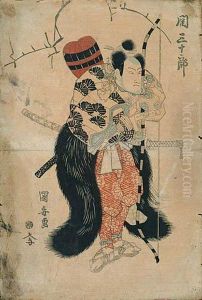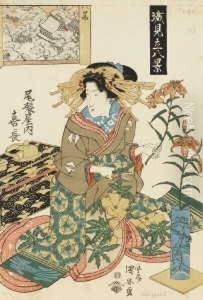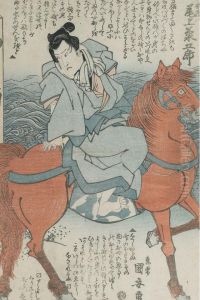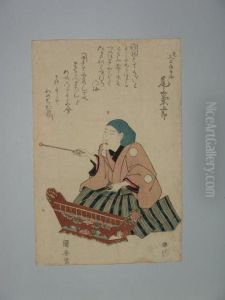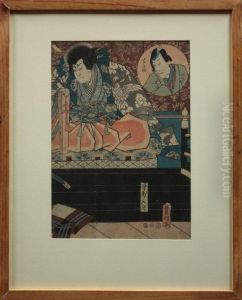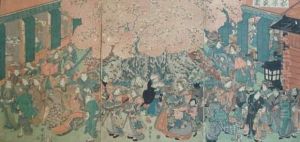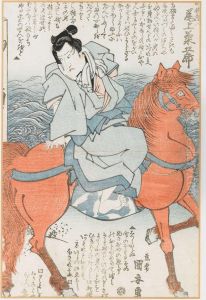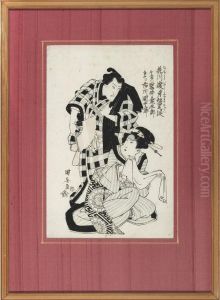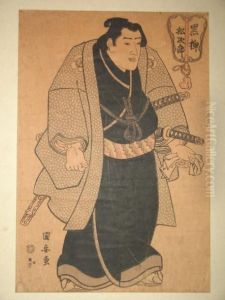Ipposai Yasugoro Kuniyasu Paintings
Ipposai Yasugoro Kuniyasu was a Japanese ukiyo-e artist known primarily for his woodblock prints. Born in 1794 during the Edo period, Kuniyasu was active during an era when the ukiyo-e genre flourished, depicting the 'floating world' of pleasure, entertainment, and fleeting beauty. Although not as well-known as some of his contemporaries, such as Hokusai or Hiroshige, Kuniyasu contributed to the rich tapestry of Edo period art with his distinctive style and works.
Kuniyasu was a pupil of the famous Utagawa Toyokuni I, who was a dominant figure in the Utagawa school of Japanese woodblock printing. Under Toyokuni’s tutelage, Kuniyasu developed his skills and eventually started to produce his own works, often signing them as Utagawa Kuniyasu. He created a variety of prints, including bijinga (pictures of beautiful women), sumo wrestlers, and kabuki actors, which were popular subjects in ukiyo-e prints of the time.
Kuniyasu's career spanned a relatively short period, and he passed away at a young age in 1832. Despite his early death, his prints remain valued by collectors and scholars for their contribution to the art of the late Edo period. His works are characterized by the use of vivid colors and strong lines, and they often exhibit a dynamic sense of movement, reflective of the vibrancy of urban culture in Edo (modern-day Tokyo).
While information about Kuniyasu’s life is not as abundant as that of some of his peers, his prints continue to be studied and appreciated for their artistic merit and historical value. They provide insights into the social and cultural life of Japan during a period of significant change and serve as a testament to the enduring legacy of the ukiyo-e tradition.
